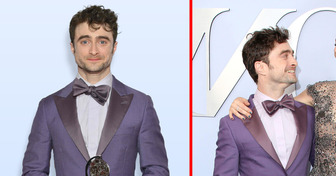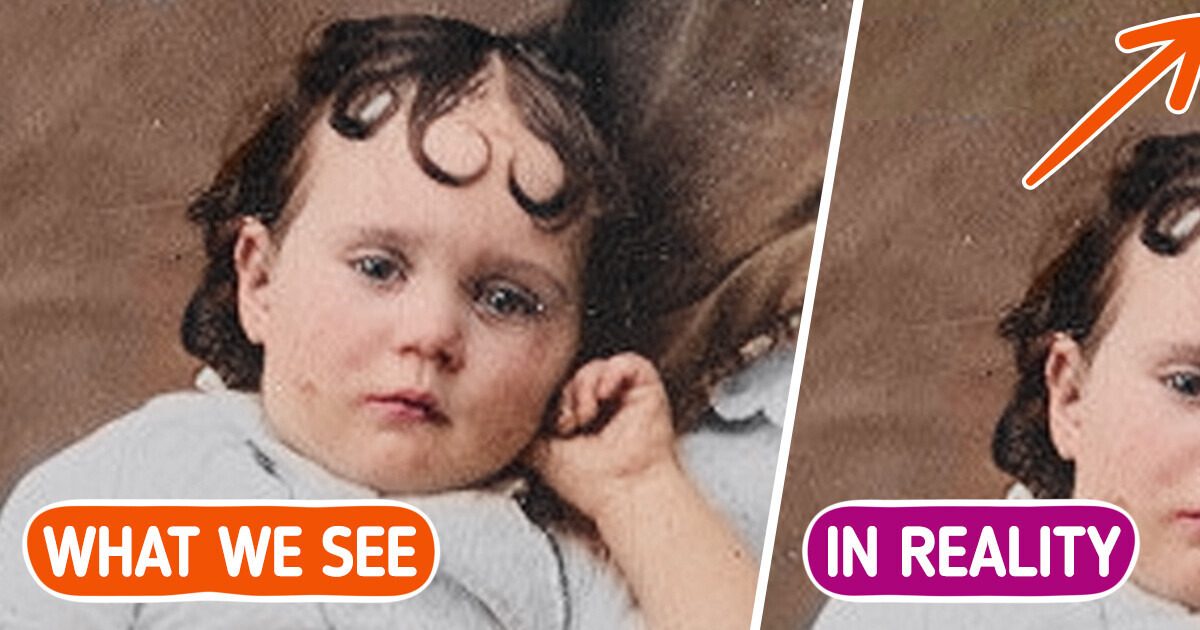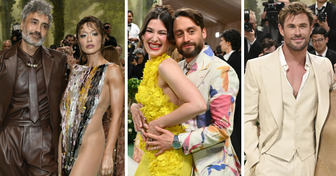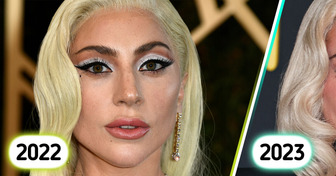“Look Like Mother and Son,” Daniel Radcliffe, 34, Makes Rare Appearance With Partner, 39 — Fans Are Shocked


Many legendary photos not only have a soul, but also affect our perception of a particular era, and cause acute bouts of nostalgia. We decided to find out how some famous photos were created and how these images influenced the fate of the photographers and models.
This is one of the first surviving photographs that Louis Daguerre took in 1837 or 1838. It is the photograph that most likely captured people for the first time. This claim was disputed by other photographers, but unfortunately none of the images they created have survived.
In those days, the shutter speed of 4–5 minutes was required to get a clear and contrasting photograph, so the moving figures of people, horses, carriages and wagons were not imprinted on the plate, and the usually busy boulevard looks completely deserted. Nevertheless, 2 blurred silhouettes can be distinguished in the image: a shoe shiner and his customer, who were standing more or less still during the time the photograph was taken. In addition, researchers are still trying to find traces of other people in the photograph.
In the Victorian era, an unusual genre of photography called “Hidden mother” was very popular. At the time, a long exposure was required to get a clear photo, and holding a small child still was not an easy task. That’s why the baby was usually held by someone: mother, father or nanny. To prevent the adult from being seen in the photograph, they were hidden with bedspreads, curtains or camouflaged under furniture, or in some cases simply retouched. The result was sometimes frightening.
It is still unknown why parents didn’t want to be in the same photo with the child. Perhaps the adults simply wanted to focus all the attention of the audience on the child. With the development of technology in the 1920s, the popularity of the genre faded away. However, 10 years ago, these photos resurfaced on the Internet, and people began to share them, amazed by the quirks of their ancestors. And collector Linda Fregni Nagler even dedicated a book to this phenomenon.
This photograph was taken in the studio of photographer Eric Enstrom. Most researchers suggest that the photograph was taken in 1918, but Enstrom’s daughter, Rhoda, claimed to remember the shooting process, so perhaps Grace was created in 1920. The photograph captures Charles Wilden, who earned a meager living as a peddler and lived in a sod house.
In 1926, Enstrom paid Wilden $5 for giving up the rights to the photograph. After that, the latter disappeared. When the photograph gained unprecedented popularity, Eric tried to find Charles, but the man vanished. All subsequent efforts of the Enstrom family and various researchers to find any trace of Wilden were unsuccessful. The man’s fate remained a mystery.
To this day, it’s still unknown exactly who took the photograph. Moreover, some researchers claimed that the photograph was either taken in a studio or carefully retouched. Doubts were dispelled by Irish film director Seán Ó Cualáin, who discovered the copy of the famous photograph in Galloway by chance, next to which a note was attached, saying, “The man sitting on the right is my father.”
Sean managed to find the contacts of the person who had left the note, confirm the identity of 2 men in the photo, the authenticity of the photo itself and at the same time find out that the authorship may belong to one of 3 photographers. The photo itself was taken on September 20, 1932, as part of an advertising campaign for the skyscraper under construction. At the request of the photographer, workers at the construction site played football, took a nap and finally settled down on a beam to have lunch. The structure was almost 850 feet high.
The photograph also inspired a ride called the Beam, which opened on the former RCA Building’s 69th floor terrace in 2023. Visitors have to sit on the beam, fasten themselves with special straps, after which the structure is raised to a height of 11 feet and turned around 180 degrees (the beam remains above the site at all times). However, lunch is not offered on this ride.
It is now known that some of the most famous photos of Earth from space were taken by astronaut William Anders. However, for a long time another crew member, Frank Borman, claimed that the photos were his work.
According to him, Anders did have a camera, and when Borman saw the Earth rising from behind the Moon, he immediately offered William to take the photo. But Anders refused, saying it was not in the crew’s plans. Borman allegedly managed to persuade another astronaut to give him a camera and took the famous shots.
Although William didn’t insist on authorship, researcher and writer Andrew Chaikin was able to access the original flight records and establish that it was Anders, new to that expedition, who took all the photos of the rising Earth. Anders first photographed the Earth on black and white film, then quickly found color film and took 2 more photos.
Despite Chaikin’s work and the fact that Borman admitted that he had confused this episode with another one earlier and that all 3 photos were taken by his coworker, some sources still claim that the first black-and-white photo belongs to Borman.
When Betty Grable finished filming the movie Sweet Rosie O’Grady, the studio decided that they need photos of the actress in a bathing suit for the advertising campaign. According to Betty, the photo shoot didn’t go well from the very beginning. Frank Powolny wanted to do something special, but all the shots came out too standard.
Then the photographer asked the actress to turn her back to the camera — just for a change. The actress followed his advice and cheerfully asked, looking over his shoulder, “Something like this?” Satisfied, Frank took a couple of shots, and it was the second one that became world-famous.
As a result, more than a million copies of the famous photograph were sold, and Grable became a superstar overnight. Taking advantage of this, the film studio began to persistently offer Betty more diverse roles. However, the actress wasn’t sure in her talent and flatly refused projects that didn’t match her personality. Finally, Grable agreed to star in the musical comedy Cover Girl, which was written specifically for her and became a huge success.
One of the most famous photos in history was taken on the birthday of the great physicist. A gala event was held at Princeton University in honor of Einstein’s 72nd birthday. It was attended by many photographers, and toward the end Einstein was tired of the camera flashes. When the scientist was already leaving the event, another group of reporters ran up to his car.
Photographers asked Einstein to smile, but, according to legend, he was tired and not in the mood, so angrily exclaimed, “Enough!” No one listened to Albert, so he showed his tongue to the crowd and immediately turned away. Photographer Arthur Sasse was incredibly lucky — he was the only one who was able to capture this reaction of the famous scientist. As a result, Einstein liked his portrait so much that he asked the photo agency to make 9 copies of it for him. The physicist subsequently used them as postcards.
Photographer Philippe Halsman and Salvador Dalí met in 1941 at the artist’s exhibition. After that, the men collaborated for decades and met at least once a year. Halsman’s daughter Irene said that Philippe and Salvador got along well, as Dalí was not interested in taking photographs himself, nor Halsman interested in painting.
If Dali had a crazy idea, Halsman always tried to think of a way to make it real, and vice versa.
The famous photograph was taken in 1948. According to Halsman’s idea, all the objects in the frame were supposed to float in the air. For this purpose, the easel and the painting were suspended on ropes, the ladder was raised on a stand, and the chair was held by an assistant. On the count of 3, an assistant would splash water, and on the count of 4, Dali would jump.
Halsman had to take 26 shots, and the entire shoot took about 6 hours. In the end, the perfect shot was chosen, and later Philippe removed all unnecessary elements from it. The finished work was published in Life magazine and became world-famous. It was even listed as one of the 100 most influential photographs of all time.
Marilyn Monroe and photographer Sam Shaw met on the set of the movie Viva, Zapata! in 1951, where the actress was not taken for the role. Young people quickly became friends. Therefore, when Sam was invited to work as a behind-the-scenes photographer for the movie The Seven Year Itch, Marilyn made several poses specifically for him. At a certain point, Monroe turned to the photographer and shouted, “Hi, Sam!” It was this shot that became the legendary photo.
However, the famous scene cost Marilyn Monroe her marriage. When her husband, Joe DiMaggio, saw it, he literally went into a frenzy, although Monroe only followed the idea of the director. The couple had a fight in public, after which the actress filed for divorce.
This image was taken in 1998 by former National Geographic photographer Charles O’Rear near the Napa—Sonoma County line. The hills were usually covered with vineyards, but in the early 90s they were cut down for a while due to an insect infestation. The photographer was driving to his girlfriend’s house when he noticed the stunning scenery from his car window. A storm had just passed over the area, making the grass emerald green, the clouds parted, and the sun came out.
O’Rear made 4 shots and posted them on a photo stock. Microsoft bought all the rights to the photo and paid an enormous amount of money for it. They made the photo the default wallpaper for the Windows XP operating system. O’Rear always claimed that he hadn’t processed the photo in any way and that the colors in the photo are real. Years later, several photographers tried to replicate the famous shot, but were unsuccessful: the area had already been replanted with vines.

By the way, originally another photo by Charles O’Rear was to be used as the main wallpaper in Windows XP. The man took a photo of the desert in the late 1990s in the Kalahari Gemsbok National Park (South Africa). However, Microsoft had to abandon this idea. Some people complained that the outlines of the dunes reminded them of a butt.
But these were not the only complaints about the image. Some researchers noticed that the Moon on the image was photographed upside down, so the image most likely underwent additional processing. Charles O’Rear himself never commented on these criticisms.
And these photo tricks will help to take your picture to the new level. Check them out.











